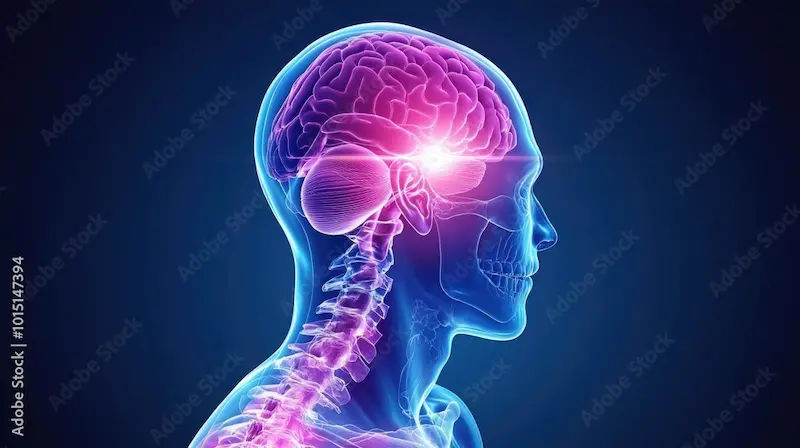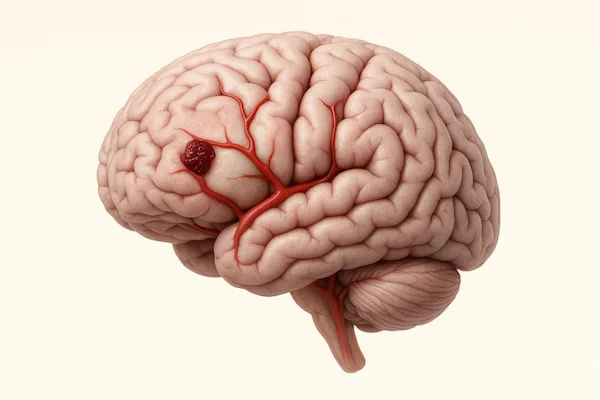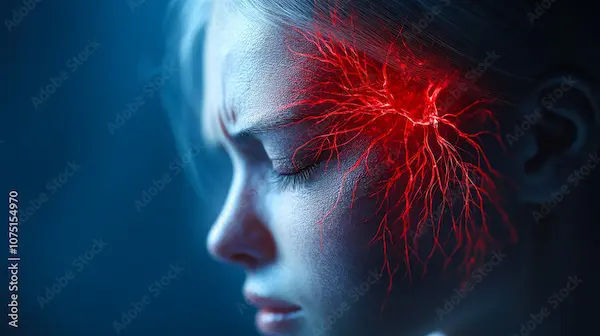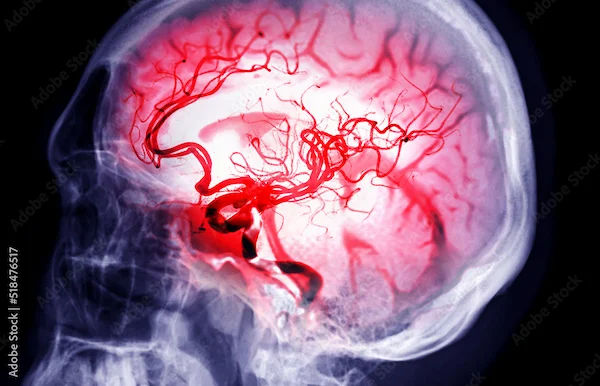Stroke Myths and Facts: Separating Truth from Misconception
Stroke myths can be dangerous. Learn the facts about stroke symptoms, risk factors, and prevention to protect yourself and loved ones.

Written by Dr.Sonia Bhatt
Last updated on 3rd Jul, 2025

When the blood supply to a part of the brain is disrupted, which leads to lack of oxygen and nutrients, stroke occurs. This can cause brain cells to die or become damaged. Depending on the severity of the stroke and the area affected, it can lead to a wide range of physical and mental disabilities, and even death.
Despite it being a leading cause of death and disability worldwide, there are many myths and misunderstandings about stroke. These misconceptions can prevent people from recognising the early signs or taking preventive measures.
Understanding types of Stroke
There are two primary types of strokes: ischemic and hemorrhagic.
Ischemic Stroke: This is the most common type, accounting for around 87% of all strokes. It happens when a blood clot obstructs an artery leading to the brain, preventing blood from reaching part of the brain. The blockage can be due to atherosclerosis (a build-up of fatty deposits) or a blood clot.
Hemorrhagic Stroke: This type occurs when a blood vessel in the brain ruptures, causing bleeding within the brain. The pressure from the blood leak can damage brain cells. Hemorrhagic strokes are less common but are more severe.
Both types of strokes can lead to permanent brain damage if not treated promptly.
Causes and Risk Factors
Strokes are caused by a variety of factors, which can be broadly divided into modifiable and non-modifiable risk factors.
Non-modifiable factors include age, family history, gender, and ethnicity. As we age, the risk of stroke increases. Family history can also play a role, as can gender—men are at a higher risk of stroke at a younger age, while women are more likely to have a stroke later in life.
Modifiable risk factors are lifestyle-related and include high blood pressure, high cholesterol, smoking, excessive alcohol consumption, diabetes, physical inactivity, and poor diet. These factors can be controlled with proper management and lifestyle changes.
Common Myths About Stroke
1. Stroke Only Affects the Elderly
Many people think that stroke is only a concern for older individuals, but this is far from true. While the risk increases with age, stroke can affect people of all ages, including young adults and even children. In fact, stroke is one of the leading causes of death and disability among young adults. High blood pressure, smoking, and other lifestyle factors can increase the risk, regardless of age.
2. Stroke is Not Preventable
This myth can be dangerous because it leads people to believe they cannot take steps to reduce their stroke risk. In reality, most strokes are preventable. By adopting a healthy lifestyle, managing risk factors like high blood pressure and diabetes, and avoiding smoking, individuals can significantly decrease chances of having a stroke. Regular medical check-ups also allow early detection of risk factors before they become more serious.
3. Strokes Occur in the Heart
Another common myth is that strokes occur in the heart, but this is incorrect. While heart problems can increase the risk of stroke (for example, due to atrial fibrillation or heart disease), a stroke is actually a "brain attack" caused by a blockage or rupture in the blood vessels of the brain. The heart may be involved indirectly, but strokes are fundamentally a neurological issue.
4. Recovery from Stroke is Impossible
This myth can be discouraging for stroke survivors and their families. While it is true that recovery from stroke can be challenging, it is far from impossible. Many stroke patients experience significant improvements in their physical and cognitive abilities with appropriate treatment and rehabilitation. Early intervention and a comprehensive rehabilitation plan, including physical, occupational, and speech therapy, can lead to better outcomes.
Facts About Stroke
1. Anyone Can Have a Stroke
Contrary to the wide spread belief that stroke only affects certain populations, anyone can have a stroke. It does not depend on your age or on your health status. While some groups are at higher risk due to factors like age, family history, or pre-existing health conditions, strokes do not discriminate. Everyone should have knowledge of the signs and symptoms of stroke, by knowing it they can seek medical attention as soon as possible.
2. Stroke Prevention is Possible
The reality is that up to 80% of strokes can be prevented by making changes in lifestyle and addressing risk factors. Managing conditions such as high blood pressure, diabetes, and high cholesterol are important to reduce chances of stroke. Changing lifestyle by avoiding smoking, maintaining a healthy weight, eating a balanced diet, and exercising regularly are also crucial strategies to reduce stroke risk.
3. Stroke is a Brain Attack, Not a Heart Attack
As mentioned earlier, strokes are brain attacks, not heart attacks. While both conditions are related to the cardiovascular system, a stroke occurs when there is an issue with the blood vessels in the brain. A heart attack, on the other hand, occurs when blood flow to part of the heart muscle is blocked. It’s important not to confuse the two, as the symptoms, causes, and treatments are different.
4. Advances in Stroke Therapy Make Recovery More Achievable
Stroke treatment has come a long way in recent years. Early intervention with clot-busting drugs or mechanical thrombectomy can restore blood flow to the brain in some patients, preventing long-term damage. Advances in rehabilitation therapies also make it possible for many stroke survivors to regain independence and improve their quality of life. The key is seeking help quickly and following through with rehabilitation and ongoing support.
Recognising Stroke Symptoms
Recognising the signs of stroke quickly can make a life-saving difference. Following are the most common symptoms of stroke.
Sudden numbness or weakness in the face, arm, or leg, especially on one side of the body
Sudden confusion, trouble speaking, or difficulty understanding speech
Sudden trouble seeing in one or both eyes
Sudden difficulty walking, dizziness, loss of balance, or lack of coordination
Using the FAST acronym can help identify a stroke:
Face: Ask the person to smile. Does one side of the face droop?
Arms: Ask the person to raise both arms. Does one arm drift downwards?
Speech: Ask the person to repeat a simple sentence. Is their speech slurred or strange?
Time: If you notice any of these signs, it’s time to call emergency services immediately.
The sooner a stroke is treated, the better the chances of recovery. Every minute counts. If you or someone else is having a stroke, call emergency services immediately. Do not wait for symptoms to improve.
Stroke Prevention Strategies
The best way to prevent a stroke is by adopting a healthy lifestyle. Key strategies include:
Eat a balanced diet: Focus on fruits, vegetables, whole grains, lean proteins, and healthy fats.
Exercise regularly: At least 150 minutes of moderate-intensity exercise per week is required for a healthy lifestyle.
Maintain a healthy weight: This helps manage blood pressure and reduces the risk of diabetes.
Quit smoking: Smoking is a major risk factor for stroke.
Limit alcohol consumption: Excessive drinking can lead to high blood pressure and other health issues.
Along with a healthy lifestyle, regular visits to your healthcare provider for check-ups can help detect risk factors early.
Consult Top Neurologist
Treatment and Rehabilitation
If a stroke is suspected, immediate treatment is crucial. Depending on the type of stroke, treatment may include clot-busting drugs or surgery to remove the clot. For hemorrhagic strokes, surgery may be needed to repair the damaged blood vessel.
Rehabilitation following a stroke is essential for regaining lost abilities. Rehabilitation includes physical therapy, speech therapy, occupational therapy, and psychological support. With time and effort, many stroke survivors can make significant improvements in their physical and cognitive functioning.
The Role of Education and Awareness
Raising public awareness about stroke can save lives. Educational campaigns that teach people about the signs of stroke, prevention strategies, and the importance of seeking medical attention quickly are vital. The more people know, the better the chances of early detection and treatment.
There are many reliable resources available for learning more about stroke prevention and recovery. These include organisations like the Stroke Association, NHS websites, and local support groups. They offer a wealth of information, from lifestyle tips to rehabilitation support, that can help individuals reduce their risk and recover after a stroke.
Conclusion
Stroke is a serious but often preventable condition. By understanding the facts and avoiding common myths by knowledge, individuals can adopt lifestyles that reduce risk of stroke. By knowing facts, one can recognise symptoms early and seek treatment quickly to reduce damage after stroke. Key points to remember are 1) Stroke can happen to anyone, regardless of age. 2) Stroke is preventable with the right lifestyle changes. 3) Stroke is a brain attack, not a heart attack. 4) Advances in stroke treatment make recovery more achievable. In stroke, early detection and prevention are critical factors. By being aware of the risks and signs of stroke, you can take proactive steps to safeguard your health and seek prompt medical attention when necessary.
Consult Top Neurologist
Consult Top Neurologist

Dr Debnath Dwaipayan
Neurosurgeon
9 Years • MBBS, MS(Gen. Surgery), DrNB (Neurosurgery)
Delhi
Apollo Hospitals Indraprastha, Delhi

Dr. E Prabhakar Sastry
General Physician/ Internal Medicine Specialist
40 Years • MD(Internal Medicine)
Manikonda Jagir
Apollo Clinic, Manikonda, Manikonda Jagir
(150+ Patients)

Dr. Aditendraditya Singh Bhati
Neurosurgeon
18 Years • MBBS(2004), DNB Neurosurgery(2014); MNAMS; Fellow Neuroendoscopy
Delhi
Apollo Hospitals Indraprastha, Delhi
(100+ Patients)
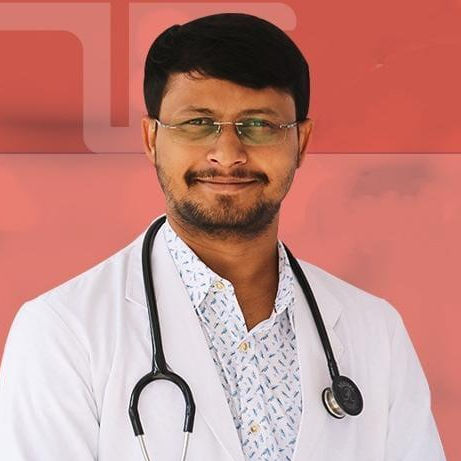
Dr. Ganeshgouda Majigoudra
Neurologist
10 Years • MBBS, MD ( GENERAL MEDICINE) DM (NEUROLOGY)
Bengaluru
Apollo Clinic, JP nagar, Bengaluru
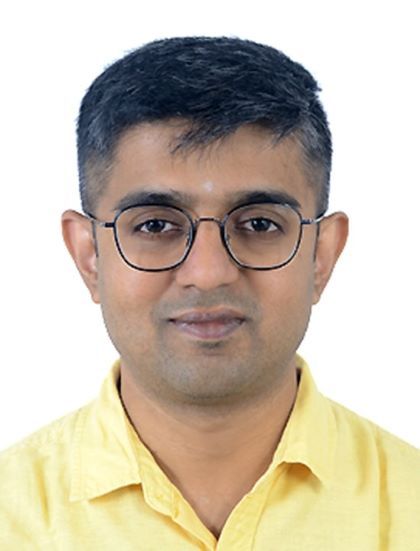
Dr. Jaidev S
Neurosurgeon
10 Years • MBBS, MS ( Genera Surgery), MCH Neurolosurgery
Bengaluru
Apollo Clinic, Indiranagar, Bengaluru
Consult Top Neurologist

Dr Debnath Dwaipayan
Neurosurgeon
9 Years • MBBS, MS(Gen. Surgery), DrNB (Neurosurgery)
Delhi
Apollo Hospitals Indraprastha, Delhi

Dr. E Prabhakar Sastry
General Physician/ Internal Medicine Specialist
40 Years • MD(Internal Medicine)
Manikonda Jagir
Apollo Clinic, Manikonda, Manikonda Jagir
(150+ Patients)

Dr. Aditendraditya Singh Bhati
Neurosurgeon
18 Years • MBBS(2004), DNB Neurosurgery(2014); MNAMS; Fellow Neuroendoscopy
Delhi
Apollo Hospitals Indraprastha, Delhi
(100+ Patients)

Dr. Ganeshgouda Majigoudra
Neurologist
10 Years • MBBS, MD ( GENERAL MEDICINE) DM (NEUROLOGY)
Bengaluru
Apollo Clinic, JP nagar, Bengaluru

Dr. Jaidev S
Neurosurgeon
10 Years • MBBS, MS ( Genera Surgery), MCH Neurolosurgery
Bengaluru
Apollo Clinic, Indiranagar, Bengaluru

